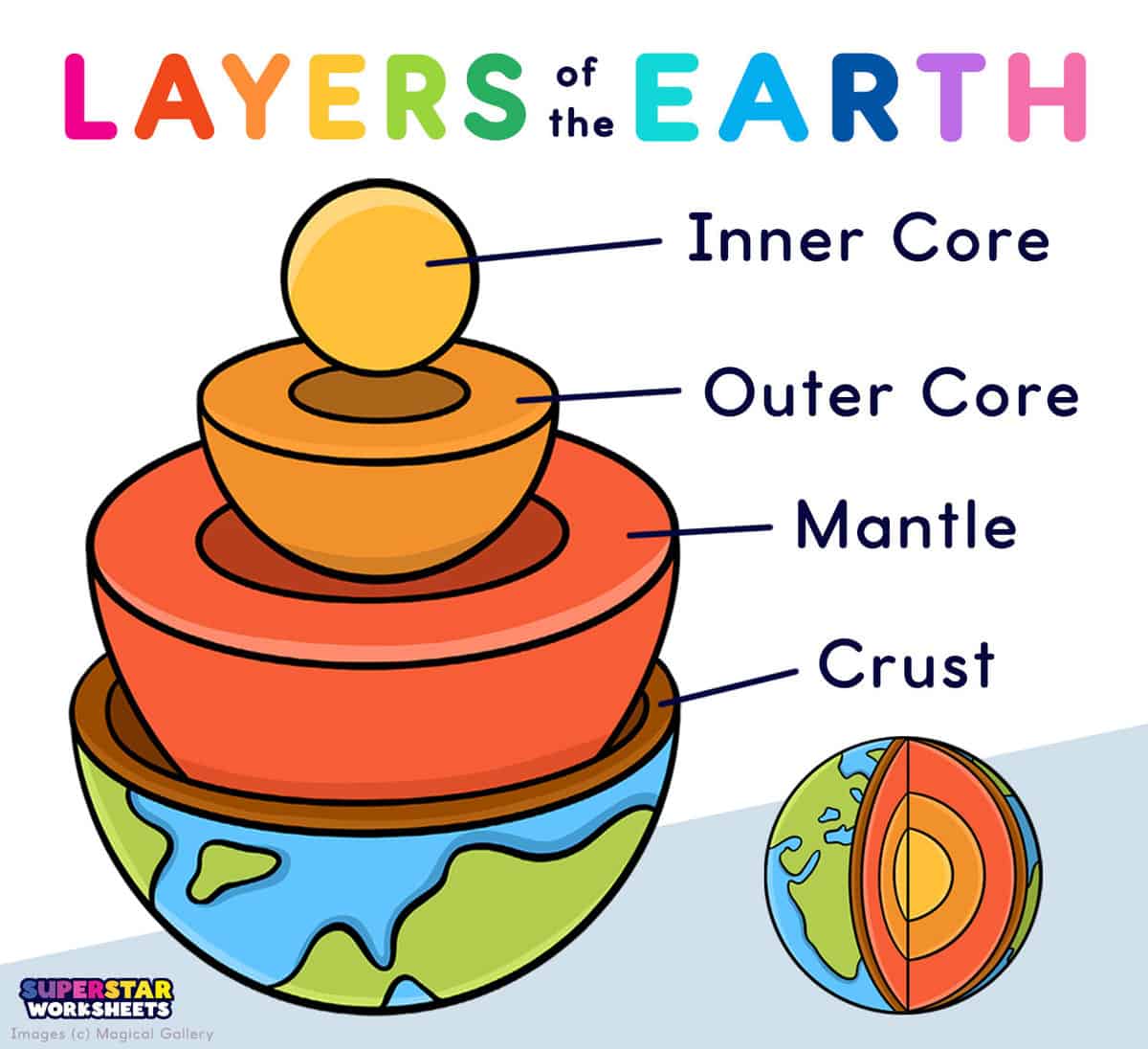
The four Layers of the Earth are the inner core, outer core, mantle, and crust. In the layers of the earth diagram above, you can see each distinct layer is visually represented. Below you’ll find free, printable layers of Earth resources in PDF format for your elementary students. We’ve included a multitude of layers of the earth lesson planning resources with free printable diagrams, labeling activities, science fair-style projects, arts and crafts, coloring pages, and so much more! These earth science projects are highly engaging and teacher-friendly! If you enjoy these, try our Scientific Method Activity Pack for use with any elementary science project.
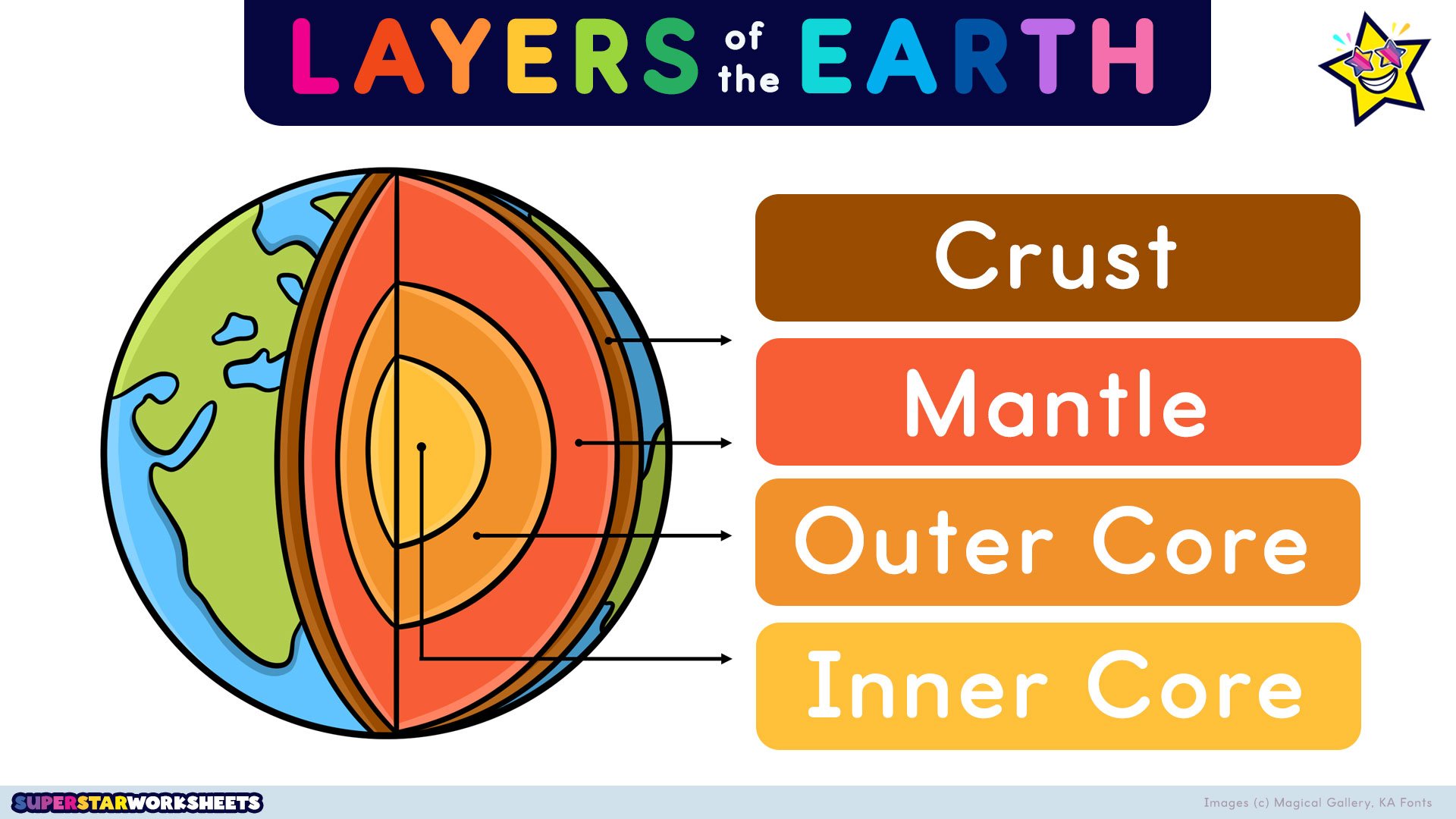
What are the Layers of the Earth?
The four main layers of the Earth are the crust, mantle, outer core, and inner core. These layers of the earth’s composition are then made up of several layers. The outermost layer is called the crust, which is the thin, solid shell that encompasses the planet’s surface. Beneath the crust lies the mantle, a thick layer of hot, semi-solid rock.
The mantle is divided into two parts: the upper mantle, which is cooler and more rigid, and the lower mantle, which is hotter and flows more easily. The core is located at the center of the Earth and is divided into the outer core and the inner core. The outer core is made of liquid iron and nickel, while the inner core is solid and composed mainly of iron. The layers of the Earth have different properties and play vital roles in shaping our planet.
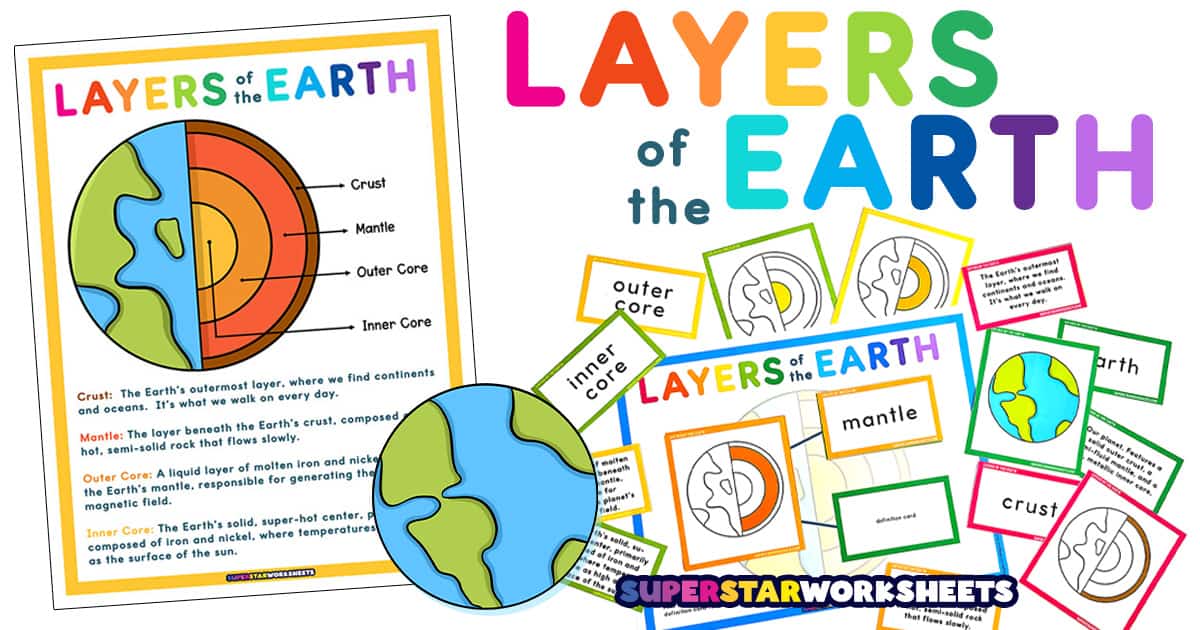
Layers of the Earth Diagram
Diagrams of the layers of the Earth are helpful to students because they provide a visual representation of the various layers. Students can see the difference in thicknesses of each layer and their location relative to one another. They can also visualize the temperature and composition of each layer, which helps them to understand the properties and characteristics of the Earth. Diagrams can also aid in explaining geological processes such as earthquakes, volcanic eruptions, and plate tectonics. Through the use of the diagrams included in this resource, students can gain a better understanding of the structure, composition, and dynamics of our planet.
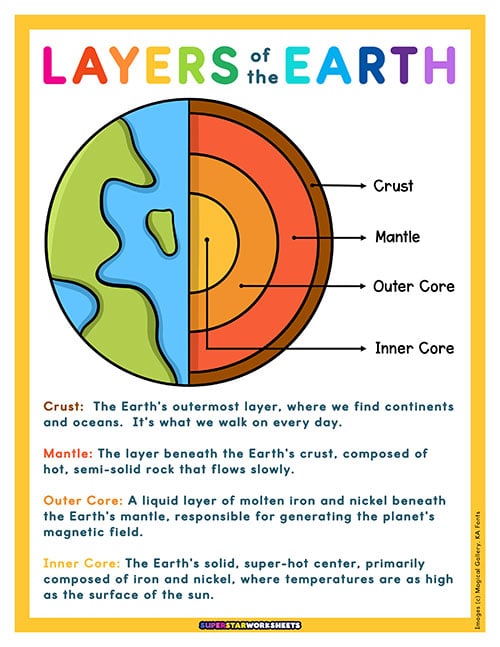
Layers of the Earth Diagram
Free printable Layers of the Earth diagrams featuring a partial cross-section of the earth. Each of the layers are labeled, and vocabulary definitions are provided. This page includes a wide variety of Layers of the Earth printable charts, diagrams, and teaching references you can use with your elementary science students.
Layers of the Earth Worksheets
Layers of Earth worksheets will bring learning back to life with your students. Teachers, these worksheets are going to be a game-changer for your lesson-planning experiences! They’ll learn through diagrams and worksheets about all 4 levels of the earth. With our Layers of the Earth pictures and teaching graphics, your budding science students will build key skills by learning amazing Earth facts including their layer names, the density of each layer, plus, we’ve included Layers of the Earth projects below that contain information about the inside of the earth’s layers.
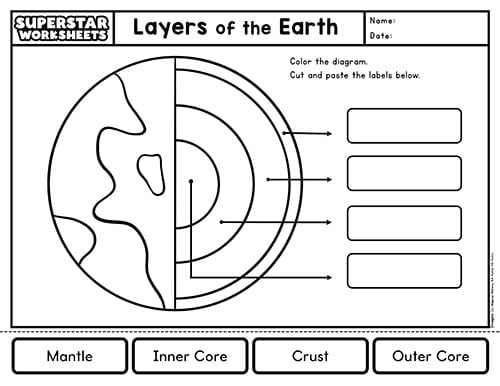
Layers of the Earth Worksheets
A variety of worksheets to help students label the Layers of the Earth structure. These are perfect to use with your elementary students when learning to identify the different layers of the earth: crust, mantle, and cores. Students will have access to charts so they can label, color-by-code, create 3-D diagrams, and so much more!
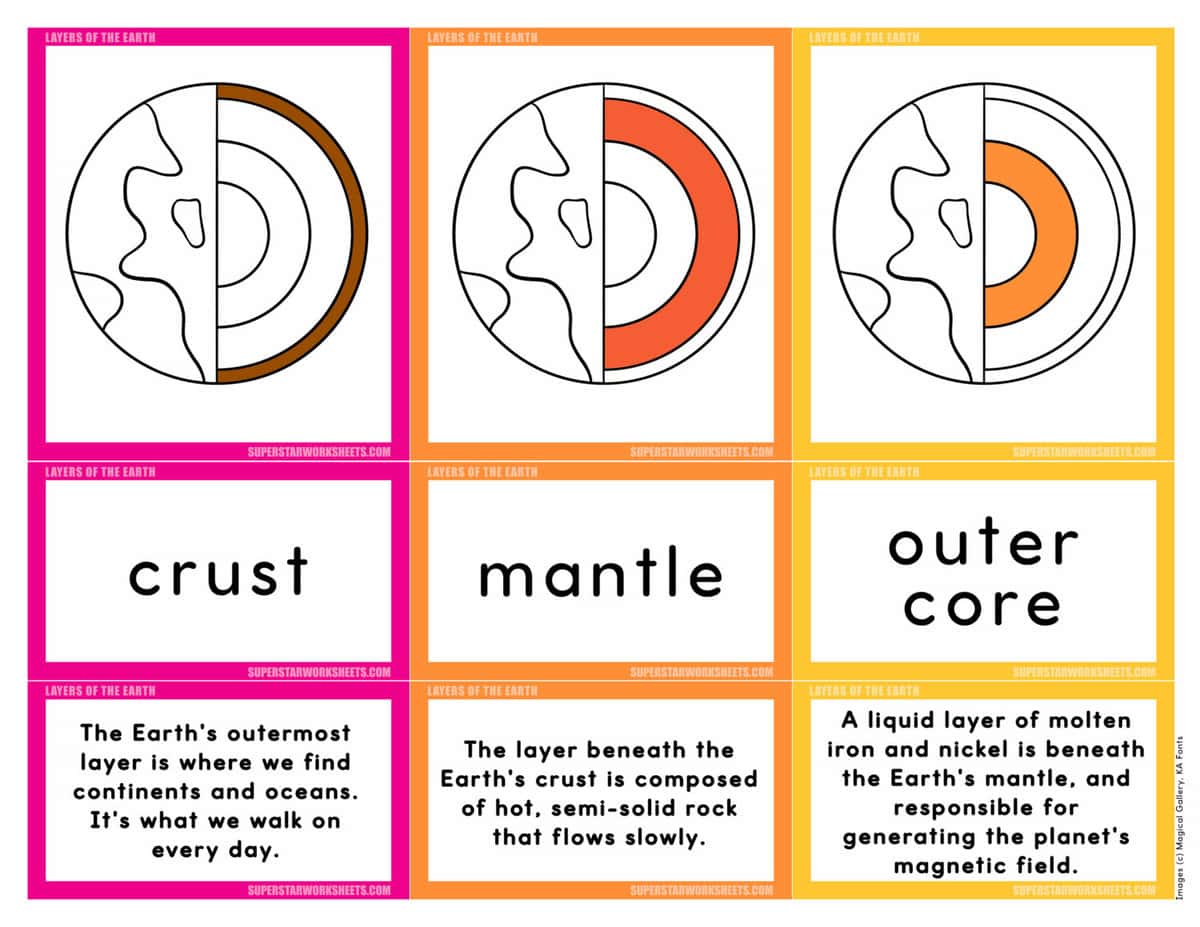
Layers of the Earth Activities
A variety of worksheets to help students label the Layers of the Earth structure. These are perfect to use with your elementary students when learning to identify the different layers of the earth: crust, mantle, and cores. Students will have access to charts so they can label, color-by-code, create 3-D diagrams, and so much more!
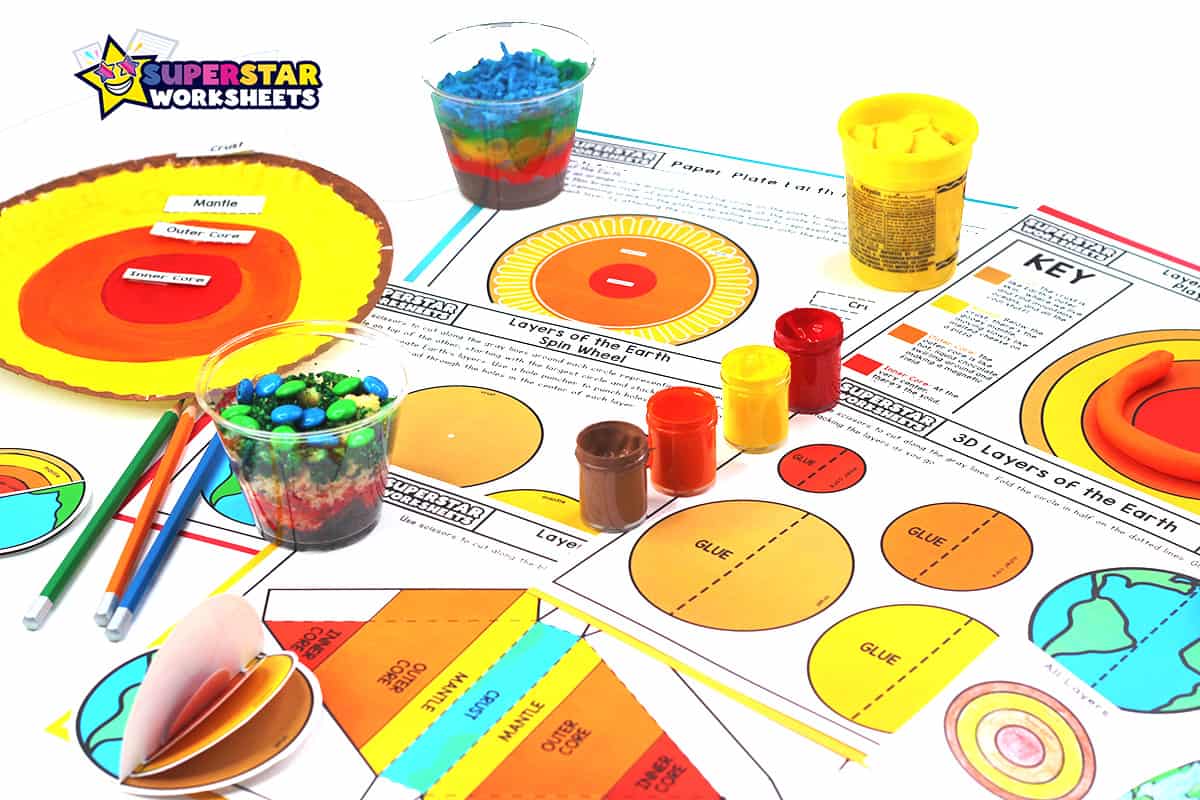
Layers of the Earth Projects
Layers of Earth Projects make learning about our home fun and exciting! With colorful and vibrant charts, worksheets, and project ideas, your students will enjoy science once again! With these hands-on, engaging experiments, students will quickly remember how many layers of the earth, where each level exists, and even draw all four layers of the earth. These projects range from 3D models to drawing worksheets. A variety of these resources would be perfect for science fair projects too!
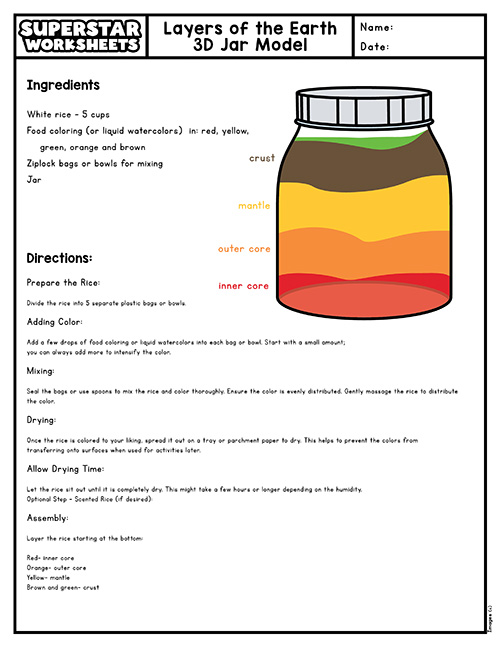
Layers of the Earth Projects
Our free compositional Layers of Earth Projects make wonderful 3D science fair projects for kids of multiple grades! From Kindergarten to Middle School, each project idea is science themed and features a variety of materials like different foods, jars, paper, and more.
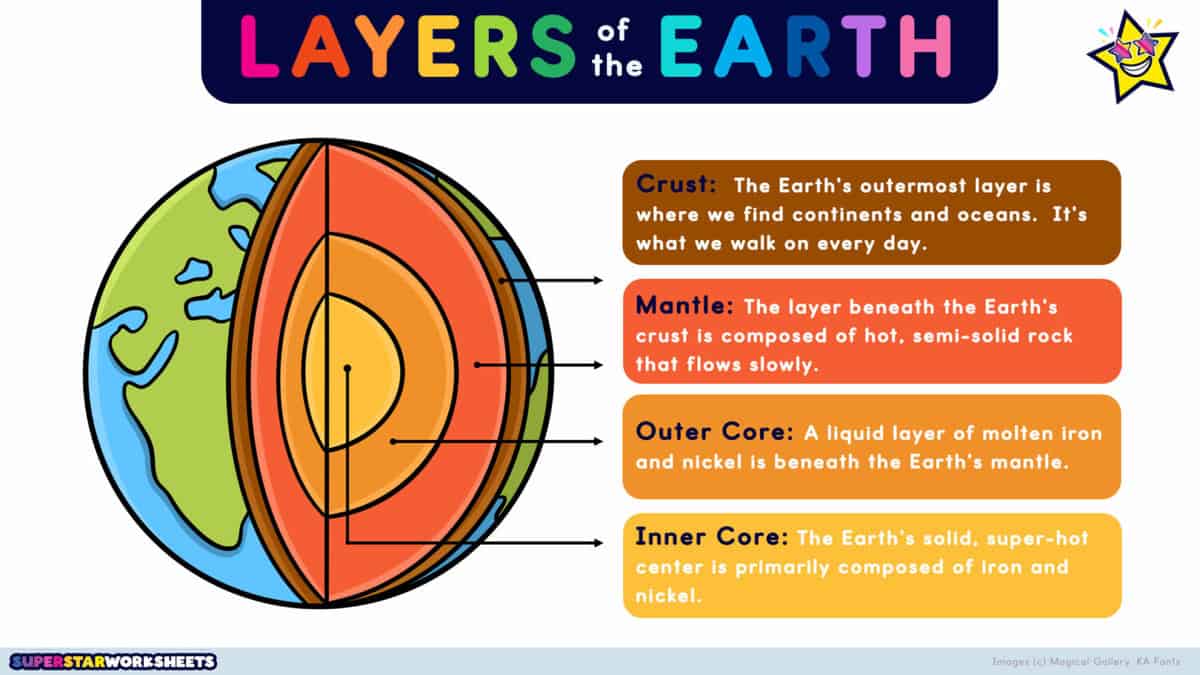
How to Teach the Layers of the Earth:
If you have elementary age students, using a sandwich as an illustration is perfect for them to visualize and understand how the Layers of the Earth levels work. Here’s an explanation of the layers of the Earth’s crust suitable for young students:
- The Earth’s Crust: Imagine the Earth like a giant sandwich. The top layer, where we live, is called the crust. It’s like the bread on the sandwich. The crust is the thinnest layer and is made up of solid rock. It’s where we find land, oceans, mountains, and soil.
- The Mantle: Underneath the crust is the mantle, which is like the filling in the sandwich. The mantle is much thicker than the crust and is made of hot, flowing rock called magma. Think of it like really thick, gooey cheese. The mantle is so hot that it’s like a boiling pot of soup deep underground!
- The Core (Outer Core & Inner Core) At the center of the Earth, there’s a super-hot, super-dense ball of metal called the core. It’s like the juicy meat in the middle of the sandwich. The core is made mostly of iron and nickel, and it’s divided into two parts: the outer core and the inner core. The outer core is liquid, like hot molten metal, while the inner core is solid because it’s under so much pressure from all the layers above it.
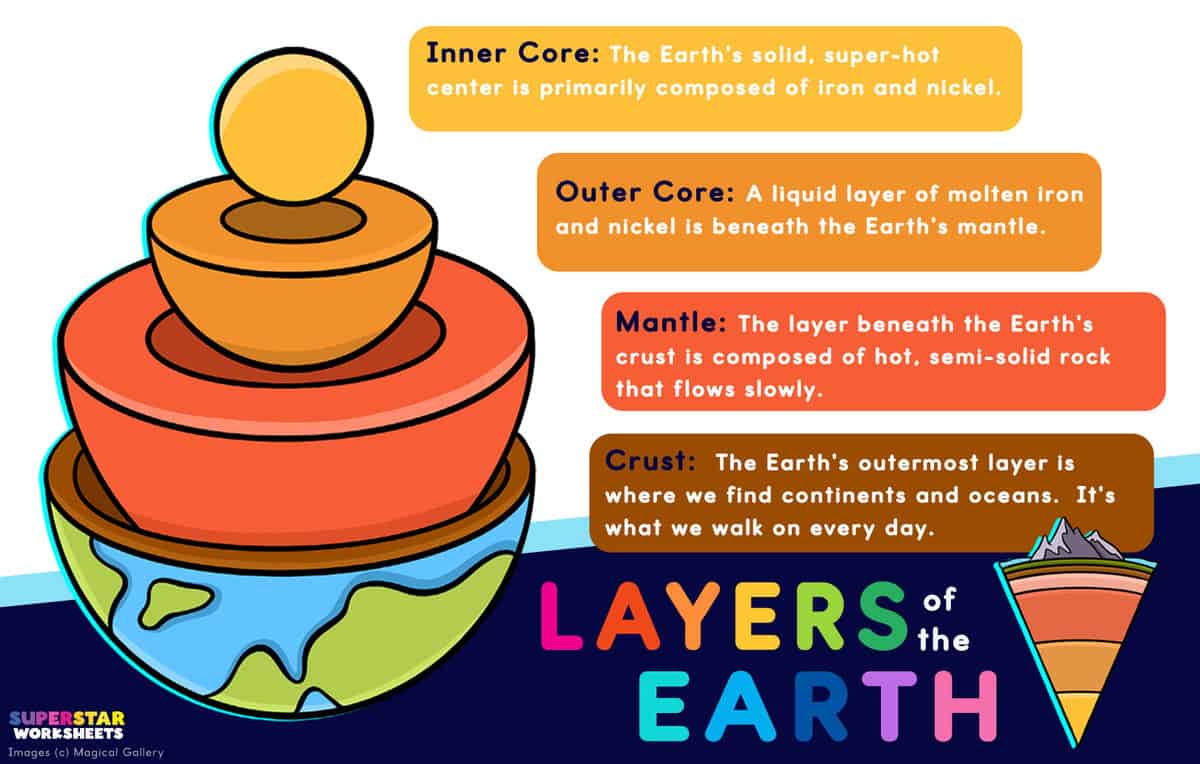
Layers of the Earth’s Crust
The Earth’s crust, which is the outermost physical layer of the planet, can be divided into two types: the continental crust and the oceanic crust. The continental crust is thicker and less dense compared to the oceanic crust. It primarily consists of granite rocks and is found beneath the continents, hence its name. The oceanic crust, on the other hand, is thinner and more dense, composed mainly of basalt rocks. It is located beneath the Earth’s oceans.
These two types of crust are part of the three layers of the Earth: the crust, mantle, and core. The crust is the outermost layer, followed by the mantle, which lies beneath it. The mantle is divided into the upper mantle and the lower mantle. The upper mantle is cooler and more rigid, while the lower mantle is hotter and more fluid-like. Finally, at the center of the Earth lies the core, comprising the outer core and the inner core.
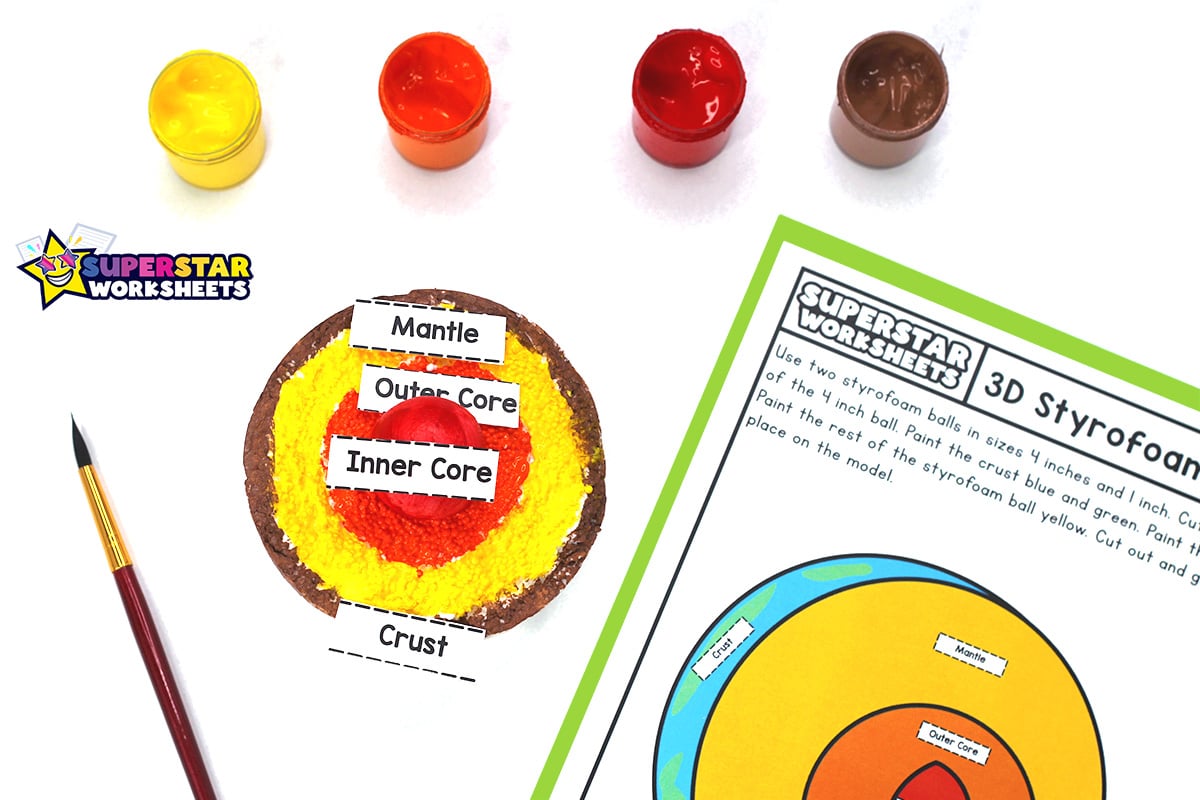
Ready for more? Expand your geology studies and learn all about landforms here.


Leave a Reply